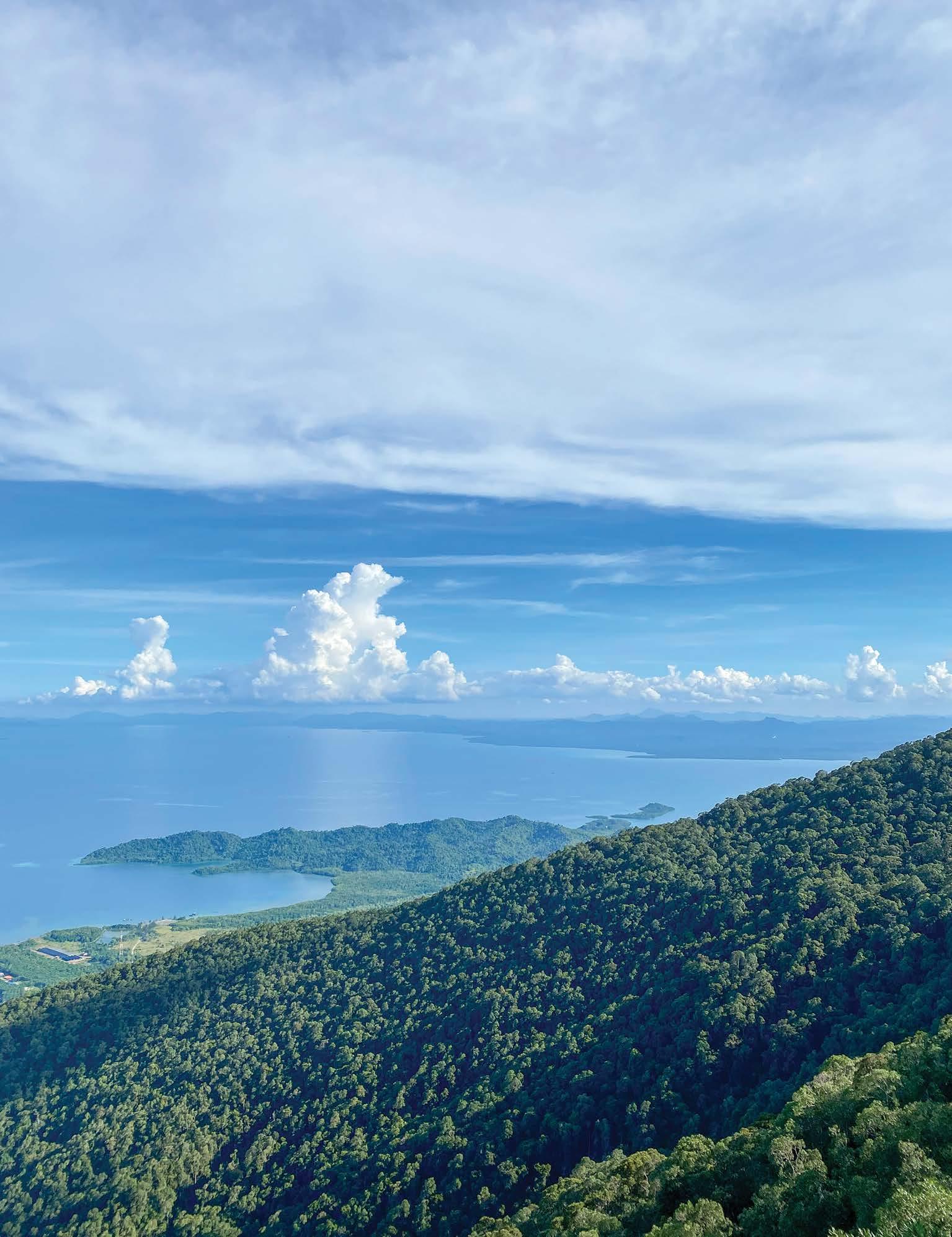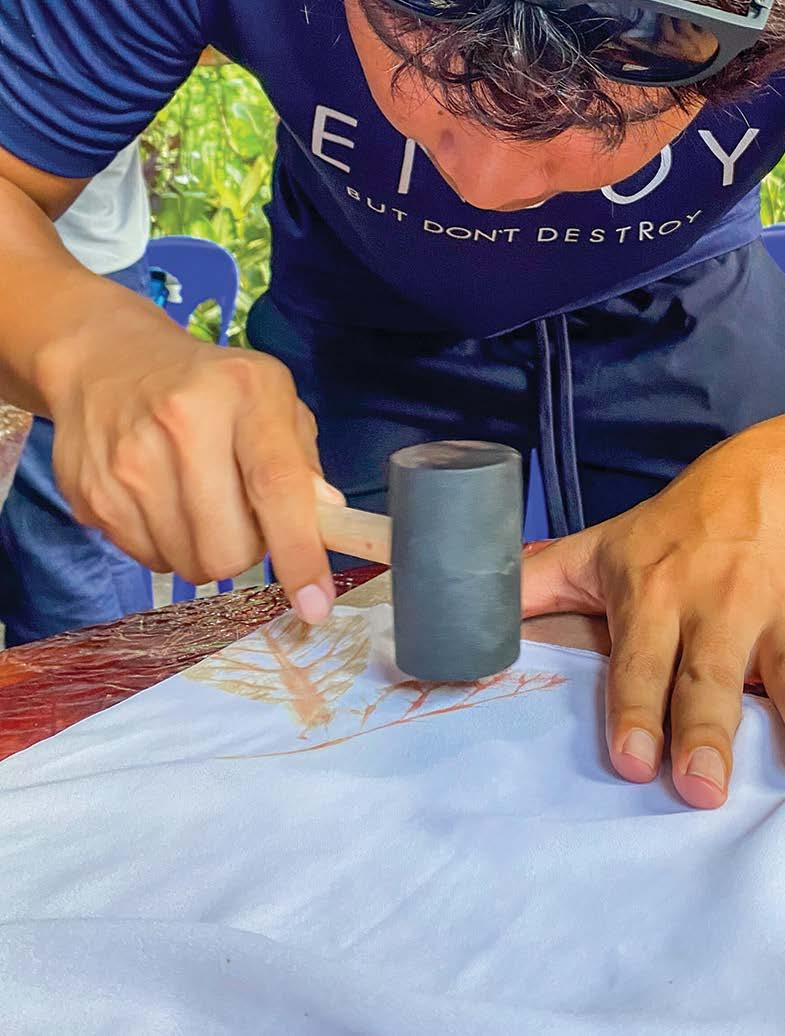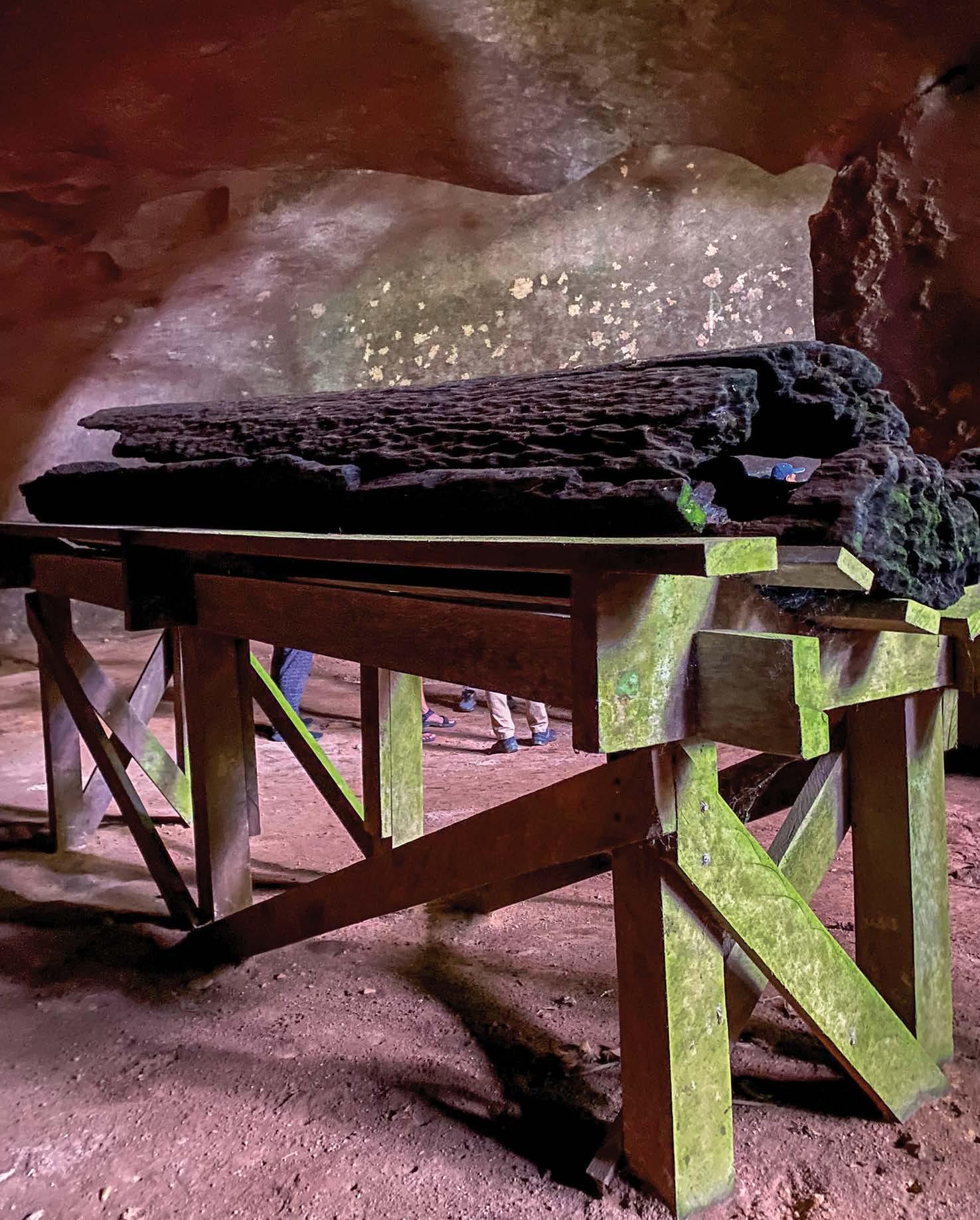
5 minute read
Hidden Gems in Lahad Datu
Text & Images by HADY ARMEEN
When talking about Lahad Datu, Malaysians tend to associate the destination with the incursion that happened back in 2013 by militants from Southern Philippines, leaving the entire nation shocked. However, Lahad Datu has now recovered and moved on from the incident and remains as Sabah’s fourth largest city with fascinating history that not many people know about. Lahad Datu is also rich in flora and fauna, ideal for tourists seeking nature.
Advertisement
Come follow me on my travels and see for yourself the gems of Lahad Datu!
The arresting view that can be enjoyed from the top of the Tower of Heaven.

Clockwise from above: Kayaking at Irunji Agrotourism; The Long Coffin found inside the Samang Buat Cave; The writer trying his hand at designing batik using the hammering technique.


Gua Tapadung
The Tapadung Cave Cluster is the natural habitat for the white Walit bird. It is protected by the members of the Idahan tribe who discovered the Tapadung Cave Cluster, which is scattered along the banks of the Segama River. There are approximately 39 caves within the Tepadung Cave cluster and among them are Samang Buat Cave (Long Coffin Cave) and Pusu Ronggos Cave. It was said that once upon a time, there were two young men who fought over a girl to the death. When their bodies were found, the Idahan community at that time decided to place their bodies in the same coffin in a longitudinal arrangement, feet meeting feet rather than side by side, hence the name Long Coffin.
Gudang Tembakau
Who would have thought that the vestiges of a former tobacco warehouse how now turned into a memorial site in Segama, Lahad Datu? I had the opportunity to explore this old warehouse for tobacco production in Segama to learn about the history about this place. Initially, this warehouse was built by a German company in 1888 and the site employed many locals; however, by 1962, it had to be closed due to the crushingly high export costs of tobacco at that time. Another reason for its closure was that the countries in South America and the United States of America have begun their own tobacco cultivation, consequently causing the demand for tobacco from Lahad Datu to decrease. According to history, Segama Tobacco Warehouse produced the best tobacco in the world and the 1950s was its heyday because the demand for tobacco was remarkably high.
Segama ATV Park
For lovers of extreme activities, you must swing by Segama ATV Park located in Segama village, Lahad Datu. The trail used for riding the all-terrain vehicle (ATV) is a tad challenging since it is within the palm plantation area, yet no less exciting at the same time, especially on a rainy day, which can be tough because the track is slippery, thus giving you an adrenaline rush. Before proceeding on the actual trail, you will first learn how to get used to the ATV by riding along a dedicated circuit. I did a few laps on the circuit to become comfortable riding the ATV. The price for riding an automatic transmission ATV is MYR70 and a manual transmission ATV is MYR60 on weekends and public holidays, while on weekdays, the prices are MYR50 for automatic and MYR40 for manual. Contact Segama ATV park at +6 019 843 4577 for more info and booking.
Blue Ring Reef
For travellers who prefer water-based activities lie diving and snorkelling, you should stop at one of Lahad Datu’s amazing attractions: the Blue Ring Reef, which was initially called the ‘Blue Lagoon’ before it became commercialised. Getting to the Blue Ring Reef takes about 20 minutes from Payang Jetty. You can find various types of corals and marine life when snorkelling at the Blue Ring Reef. Be careful not to step on corals and sea urchins. In addition, I also had the opportunity to visit Pulau Baik, not far from the Blue Ring Reef, to snorkel to see the shipwreck that is given the name ‘Japanese Timber Wreck’, said to have sunk over 30 years ago due to overload. You can go to the Blue Ring Reef by contacting Dominic Monteroso of Darvel Bay Diving at + 6 012 818 9281.
Tower of Heaven
This Tower of Heaven, which has opened since 2012, can be found in the Sapagaya forest reserve in Gunung Silam, Lahad Datu. The height of this tower reaches approximately 30 metres and offers a 360-degree view of the impressive ancient mountain called Mount Silam. If you reach the top of the tower, you are bound to be enchanted by the beauty of Lahad Datu. I myself witnessed the verdant forest that covers Mount Silam. In addition, I was also presented with the view of the azure sea because this tower faces Darvel Bay. Seeing the view from the top of this tower offers serenity and fresh cool air. Interestingly, the icon of Mount Silam is the red crab. Legend has it that the red crab is only found in Mount Silam and according to the local belief, the red crab is the area’s ‘guardian’. If you were to reach this heavenly tower, you might catch a glimpse of the red crab if you are lucky.
Irunji Agrotourism
Derived from the owner’s own name, Irunji Bin Haji Parija, this agrotourism initiative is now a success. When he first started Irunji Agrotourism, Mr Irunji only farmed fish in cages before turning his venture an agrotourism site in 2019 under the advice of the Sabah Tourism Board. Among the activities are fishing, feeding fish, kayaking and swimming with the fishes. For me, the activities offered are interesting because I never dipped in water fully surrounded by fishes, which are considerably large but tame. You can contact Irunji Agrotourism at +6 013 896 3808 for more info and booking.
Batik Ecoprint
Do you know that Lahad Datu has a place to produce batik art called Alnisya Collection? This is the place where you can learn about batik production using natural materials. I had the opportunity to make my own batik design by employing the hammering technique. First, real leaves that are used as the design motifs are soaked then dried using tissue. Those leaves are then placed on the fabric to dry. Afterwards, the leaves are hammered using a rubber mallet to transfer the patterns from to the fabric, which I find simply eye-opening, especially when applying this approach into batik production. Among the leaves used are Pokok Jati (Teak) and Telang (Blue Pea). Contact Alnisya Collection at +6 014 300 6970 or +6 013 333 4310 for more info and booking.
Gaya Travel Magazine expresses our heartfelt gratitude to Tourism Malaysia Sabah Office for making the writer’s trip to Lahad Datu smooth-sailing and enriching.










